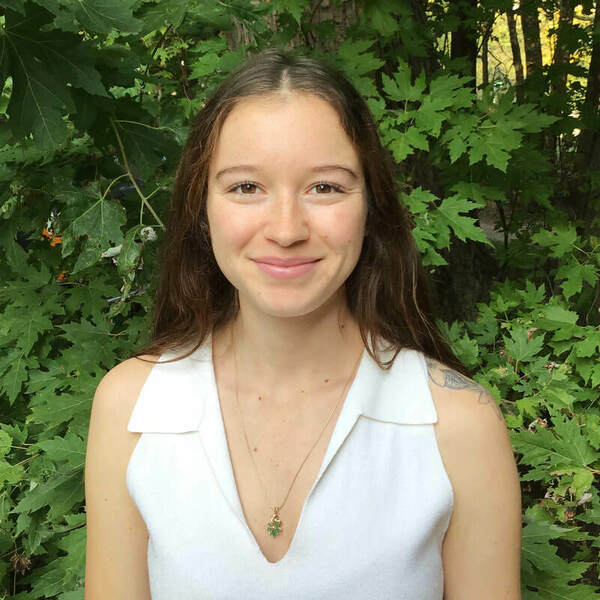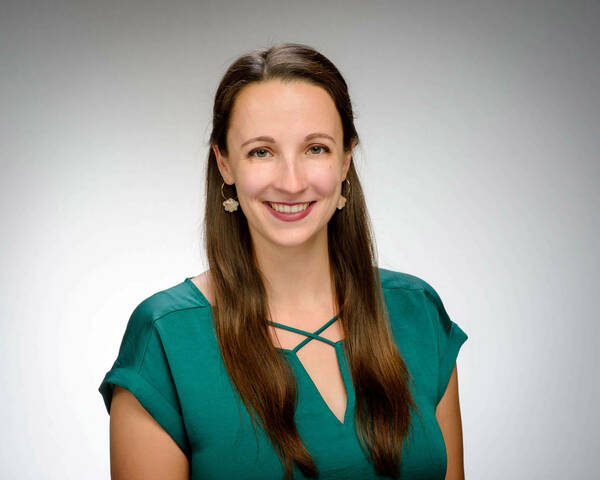A graduate student and a postdoctoral researcher in the Department of Biological Sciences at the University of Notre Dame have received highly competitive fellowships from the National Institutes of Health for work they are doing to investigate the important roles of glial cells during the development of the nervous system.

Graduate student Camden Hoover received a National Institute of Child Health and Human Development National Research Service Award (NRSA) Predoctoral F31 Fellowship. Sarah Light, a postdoctoral researcher, received a National Heart, Lung, and Blood Institute NRSA F32 Fellowship. These awards will support three years of their research in the lab of Cody Smith, the Elizabeth and Michael Gallagher Associate Professor of Biological Sciences.
Hoover’s recent work focuses on microglial cells during development, and a paper she co-authored in 2022 in Nature Neuroscience described the novel discovery of a subtype of microglia that are dependent on lymphatic endothelial cells. Scientists are seeking to learn more about glial cells, because the cells are now understood to have important implications for the immune and cardiovascular systems and might lead to better therapeutics for diseases.
Hoover said she is trying to build a picture of the differences in the microglia subtypes as well as the lineages from which they derive.
“What are these different populations doing? What sort of factors are they dependent on, so that we can better target these cells when things go awry in disease?” asked Hoover, who is hoping to defend her dissertation by the end of 2024. “We really need to learn about the basic biology of the cells, so we can understand how to target them.”

Light’s work focuses on a population of glial cells in the heart that researchers in Smith’s lab discovered. They named these cells “cardiac nexus glia” and demonstrated that they are important regulators of heart rate and rhythm. When researchers interrupted cardiac nexus glia development, the hearts appeared normal but did not respond normally to stimulation and displayed arrhythmias. Light said she hopes to further explore how cardiac nexus glia are established, and also wants to investigate their functional relationship with other types of cells in the heart.
“The results of these experiments will contribute crucial detail to our understanding of the multi-faceted roles of glia in the peripheral nervous system and provide important and specific insight about cardiac nexus glia function in heart development and disease,” she said, describing the impact of her current research.
After Light completes her postdoctoral training, she plans to seek a professorship at a university that focuses primarily on undergraduate education. She is passionate about outreach and teaching and is looking forward to the opportunity to support and mentor the next generation of undergraduate researchers.
Hoover, who has become fascinated with the physics of light and microscopy, is considering either heading up a research laboratory or possibly working in industry with a focus on imaging after she earns her doctorate.
Both said they were extremely honored to have been selected for these fellowships. Light said the fellowship award has helped her focus on the bigger picture of her research.
“When you are doing this work in the lab, nobody knows the project better than you and it’s easy to get both excited about and frustrated by the day-to-day,” Light said. “Receiving this fellowship is important and a boost of confidence that you can communicate the importance of your work in a compelling way.”
Smith noted the prestige of these two fellowships, adding that each researcher completed an extensive peer review process before being selected.
“Being awarded one of these fellowships is a major testament to the quality of scientists we have recruited here at Notre Dame,” Smith said. “Camden and Sarah are excellent scientists to receive these awards. I look forward to seeing the discoveries they will make in their remaining time in the lab."